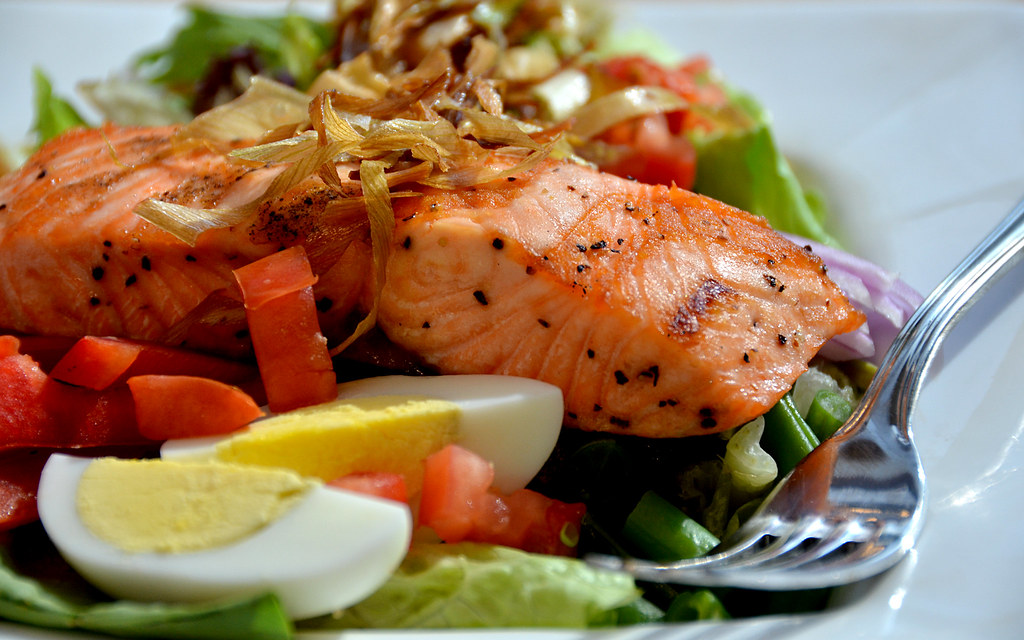For any business, it is vital to understand which qualities of a product shine in the eyes of the customer. In the seafood industry, we strive to provide the healthiest, safest, and freshest options – these things are highly appealing to seafood connoisseurs. Now, more than ever, the informed consumer is seeking out higher criteria for their seafood, to the benefit of sustainable fisheries and our oceans. Traceability and sustainability are becoming more desirable, and the industry is rising to meet to the demand.

Image courtesy of Flickr User SodexoUSA.
Interest in seafood is increasing
Overall seafood consumption in the United States has actually decreased over the last few years. A national average of 16.5 pounds per person per year in 2006 dropped down to 14.6 pounds of seafood by 2012, a decline of nearly 14% per person. The most marked year of decline was 2008 – the year of the infamous economic collapse. Amidst the post-crash chaos that plagued our economy, Americans became more careful about what they purchased. Every dollar mattered, every penny counted. Seafood on average is much more expensive than other meats, leading many to view it as a luxury item. When families are on the dollar menu, fish and shellfish don’t exactly fit into the budget.
Yet, consumer interest in seafood has increased. Restaurants have not seen the impact of this decreased consumption and there has been no marked drop in seafood sales. In fact, the prevalence of more than 80 seafood items on menus across the U.S. has been increasing along with demand.
This leads us to believe that it is the at-home market that is decreasing. Consumers want to prepare cost-effective and easy meals for themselves and their families. Seafood is also notoriously a bit more difficult to prepare well than other protein sources, such as beef and chicken. When people go out to eat, they appreciate the option to buy more expensive foods which they are less likely to prepare at home – such as seafood.
Consumers are specifically showing an increased desire for certain species of fish and shellfish – ones that are more sustainable, more local, with higher traceability. Before ordering their favorite seafood dish, restaurant-goers have now learned to ask where it comes from and how it was caught. Wild salmon, farmed tilapia, and oysters have all shown sustained growth over the last few years, all of which are on the green list of sustainable certifications.
Along with an increased knowledge of ocean health related issues, consumers are also simply learning more about the flavor of different seafoods. There are delicate nuances between types of salmon and oysters, cuttlefish and octopus, and the varying species of clam. The American palate is becoming more refined as we discover all the delicious possibilities from the sea.
Personal values are influencing buying power
Global public opinion surveys have shown growing influence of personal values in purchase behavior. Socially and environmentally conscious consumers use their purchasing power to try and improve the world around them. This movement is gaining momentum and the number of consumers making ethical decisions at the marketplace is decidedly increasing. This growth is closely following the ever-increasing access to information as we realize that our decisions at the market can have a tremendous social and environmental impact in other parts of the world, such as the increasing demand for tropical prawns from Bangladesh.
We are living in a world where information is more readily available than ever before. The United States is also in the midst of the green movement, where a growing number of people are beginning to care about the environment. Although the true environmentalist way of thought began hundreds of years ago, the internet and television have created an effective global distribution stream of information. Now we can see and hear what is happening on the other side of the world and people are seeking more knowledge and making change happen.

Image courtesy of Flickr User Kurman Communications, Inc.
Our choices can benefit us and the oceans
We are more aware of the benefits of consuming seafood and understand that fish and shellfish are a high quality protein with essential nutrients. Concerns over mercury content are being skirted as consumers research individual fish species and make smart choices on which to consume regularly and which to limit. We are realizing that we can still enjoy amazing seafood without harming our oceans – and, in fact, we can support sustainable industries that help the environment. Seafood lovers are recognizing that sustainability must be achieved in order to protect and conserve our delicious natural resources.
Look for your Marine Stewardship Council certified seafood today at businesses like Pucci Foods and support healthy oceans while enjoying healthy seafood!


